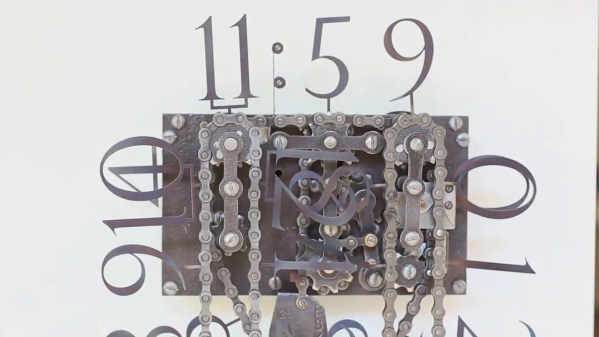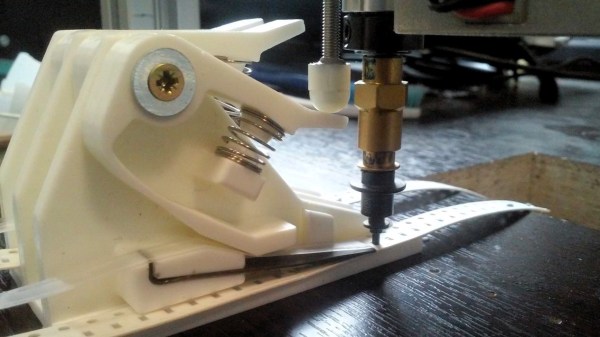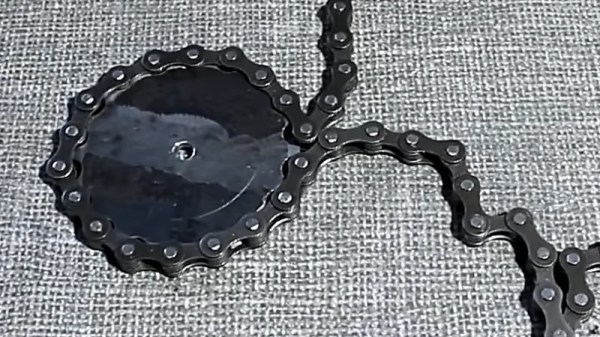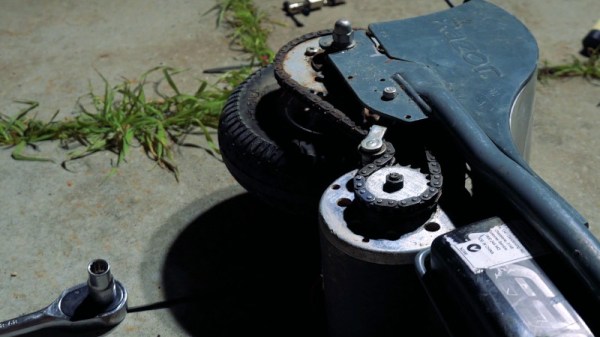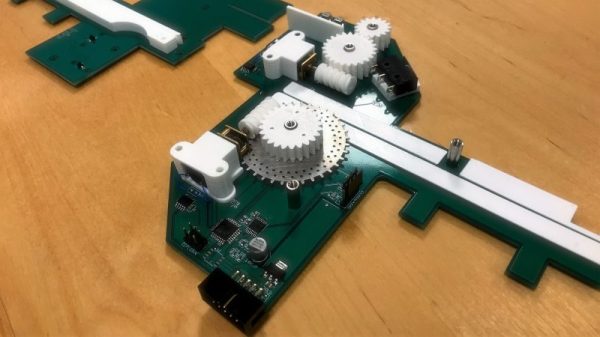When it comes to mechanical timepieces, we’re used to seeing mechanisms stuffed with tiny gears and wheel, often of marvelous complexity and precision. What we’re perhaps less used to seeing is a clock that uses chains and sprockets, and that looks more like what you’d find on a bicycle on your typical bicycle.
We can’t recall seeing anything quite like [SPE]’s “Time Machine” before. It’s one of those builds that explains itself by watching it work, so check out the video below and you’ll see where this one is going. The clock has three loops of roller link chain, each of which has a series of numbers welded to the links. The loops of chain are advanced around sprockets by a trio of geared-down motors, with the numbers standing up straight at the top of each loop. A microcontroller keeps track of the time and starts the clock advancing every minute, but a series of microswitches that are activated by the passing chain do all the rest of the control — sounds like a perfect time to say, “Could have used a 555,” but we still think it’s great the way it is.
Surprisingly, [SPE]’s clock seems like it wouldn’t be that hard to live with. Many unique electromechanical clocks that we feature, like a clock that’s nothing but hands or The Time Twister, are a little on the noisy side. While “Time Machine” isn’t exactly silent, its whirring isn’t terrible, and even though its clicks are a little loud, they’ve got a satisfying mechanical sound to them.
Continue reading “Sprockets And Chains Drive This Unique Mechanical Digital Clock”

